Textile production has been a key part of the history of many British towns – for instance, the cotton towns of Lancashire and the wool towns of Yorkshire. But silk manufacture is also a strong British tradition and a number of towns justly celebrate this history. There are even places that still produce and create unique garments from this very special fabric. In this special focus we highlight England’s ‘Silk Route’ and places to see and learn more about the traditions and people behind the industry.
Spitalfields
French Protestant Huguenots sought refuge from religious persecution in France in 1685. This was in response to the revocation of the Edict of Nantes by King Louis XIV. Many settled in Spitalfields, London, and this is where Britain’s silk story begins.
The Huguenots were highly skilled in silk weaving. They created a substantial community and made the area a prosperous hub for both making and trading. At its height there were 6,000 active weavers in two square miles! However, the regulation of London weavers’ wages towards the end of the 18th century had an impact. Some manufacturers moved away to other areas of the UK, such as Sudbury, where the masters could pay less for labour.
Dennis Severs’ House, at 18 Folgate Street, Spitalfields, is a ‘historical imagination’ of what life would have been like for a family of Huguenot weavers. Severs, an artist, restored his house to offer visitors an authentic experience of the Georgian era. He imagined it ‘as if passing through a frame into a painting’. He bequeathed the house to the Spitalfields Historic Buildings Trust shortly before his death in 1999.
Cheshire
Silk-making in Cheshire dates back to the mid-17th century.
Macclesfield, Congleton, Bollington and Stockport in Cheshire share history in the industry. Macclesfield was to dominate. It became known as ‘the silk town’ by the 1850s.
Macclesfield
Macclesfield’s silk heritage started with button making. This established itself as the principal industry of the town by 1749. However, it rapidly declined from then on, as horn buttons became prevalent.
The town had a pool of skilled silk producers. They manned the throwing mills, which were built from the 1740s onwards. The building of weaving sheds commenced in the 1790s, and by 1826 there were 70 throwing mills. However, many failed due to economic downturn. Closure of 30 mills had happened four years later. Silk products from Macclesfield went on display at the 1851 Great Exhibition. Items included ribbons, shawls and handkerchiefs.
The Silk Museum explains Macclesfield’s silk story. It is housed in the former Art School. Many artists and designers trained here.
Here, groups can learn about the mill owners and view an extensive collection of pattern books. They can also learn about parachute silk and printed silk escape and evade maps – which were made during World War Two.
Located next door is Paradise Mill, an original silk mill. It offers guided tours three times a day. It is also home to Europe’s largest known collection of Jacquard handlooms in their original setting. Book a tour to see all the stages of the Jacquard weaving process, including a demonstration on a restored loom.
Sudbury
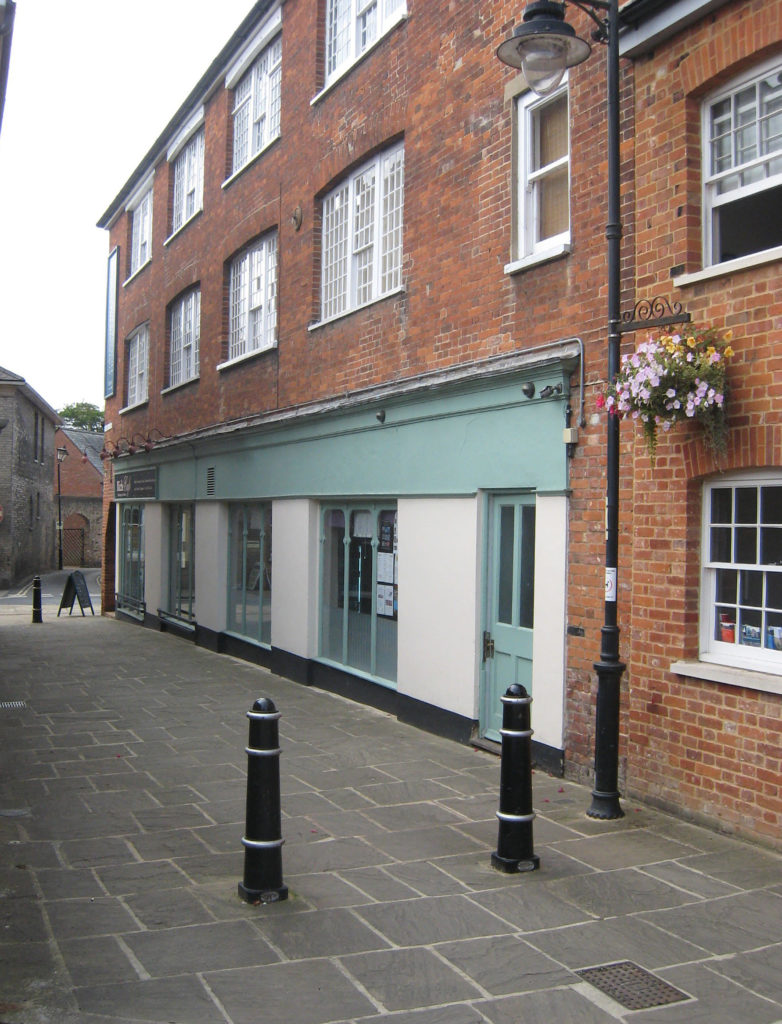
Sudbury – William Hill’s silk manufactory C Sudbury Museum Trust
Silk is still produced in quantity today in Sudbury; it is the only place in Britain to do so. Employing highly skilled craftspeople, its four factories (Banners Silk Weavers, Stephen Walters & Sons, the Gainsborough Weaving Company and Humphries Weaving) are long-established.
Weaving woollen cloth was a long tradition in Sudbury, before makers moved there in the late 18th century. The medieval timber-framed merchants’ houses in Stour Street mark the wealth this created. However, silk weaving paid better than wool. Workers therefore transferred their skills, happy to create this luxury material.
Silk weavers’ cottages can still be found in East Street, Melford Road and other parts of the town. Characterising these three-storey terraces are large first-floor windows, which maximised light for the weaving process.
The Queen wore Sudbury silk at her coronation. Also adorning it were former US First Lady, Michelle Obama and poster Adele. Sudbury’s manufactories also work with fashion designers such as Sir Paul Smith and Dior. In addition, some companies make high class furnishing fabrics and regularly receive commissions to reproduce historic designs – such as those used in the restoration of Windsor Castle.
The inaugural Sudbury Silk Festival took place in September 2019. It included a programme of talks, exhibitions and workshops to celebrate 250 years connected to the industry.
Whitchurch
Whitchurch’s Silk Mill is operational today. The town had a thriving industry. Built by the River Test in around 1813, the water mill was adapted from weaving to silk throwing in 1817. It changed hands several times, although the industry was in decline. For a period, it wove silk for Burberry. In the 1970s it produced Ottoman silk for legal and academic gowns, before eventually closing.
Hampshire Buildings Preservation Trust purchased the Mill in 1985. It was opened to the public as a working museum after restoration. Then, in 2012, the Trustees recommenced production, using 19th-century machinery, and using traditional weaving methods. The Mill makes exclusive fabrics, with members of the Royal Family amongst its many customers.
Groups can also enjoy the Mill Trail. This circular walk takes people around five historic mills (although all but The Silk Mill are now privately owned residential properties).
Braintree, Essex
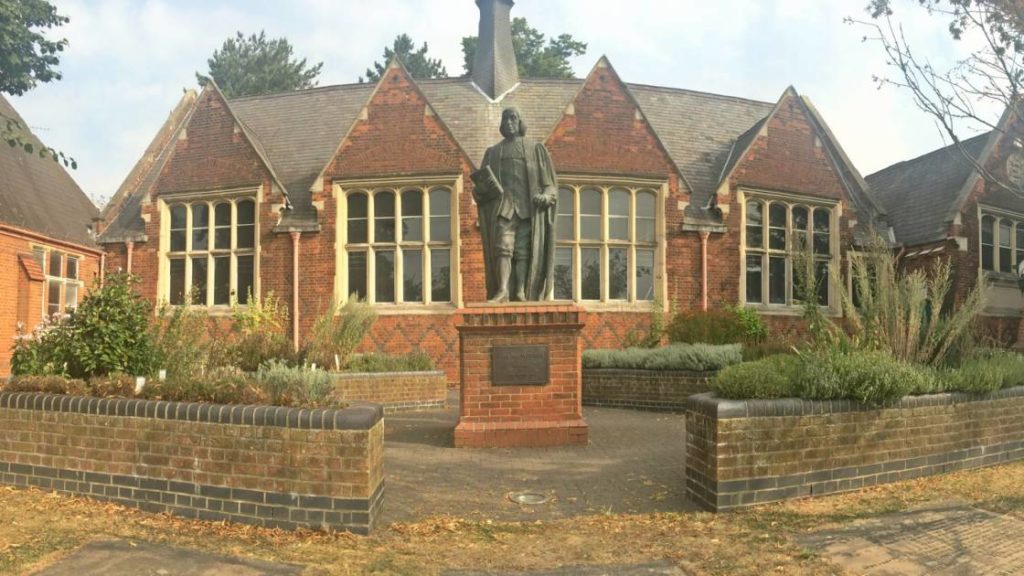
Braintree District Museum
Braintree’s role in silk manufacture was rather significant. The Courtauld family was famous in the silk industry. George Courtauld established a silk throwing business in 1799. In 1825, the family began making crape (crimped silk gauze), and this made the company famous.
The Courtaulds used their enormous wealth to endow buildings, schools, parks and gardens through the Braintree and the Essex district during the 19th to 20th century.
Braintree District Museum has an important archive relating to the international Courtauld company which began in Braintree. On display in the museum are items from this collection including crape mourning outfits and items associated with the production of crape, the material that made the company famous. Other highlights of the gallery include a Courtauld Taylor and Courtauld Loom and personal items of the family
As well as that, Warner & Sons was a leading manufacturer of silk and velvet (and produced a wide range of other woven fabrics). Significantly, it created the Queen’s coronation robes and silk hangings during the coronation ceremony. They moved from London to Braintree in 1895, and today the Warner Textile Archive is housed in part of the original mill building at Silks Way, Braintree. It maintains a publicly accessible gallery, along with rotating public exhibitions, and represents two centuries of UK textile manufacturing history.
Five more places to discover silk
Hampton Court Palace
A special exhibition focuses on the Lost Dress of Elizabeth I, and runs until 23rd February. A cloth panel, which was thought to be from a dress she wore, was made from shambles silk. It was woven with strips of beaten silver and embroidered with plants, beasts and butterflies. The cloth found its way to the small church of Bacton in Herefordshire, through a link with the Queen’s most loyal servant, Blanche Parry.
Discovered in 2016, it was then loaned to the Historic Royal Palaces. It is finally ready for display after three years and 1,000 hours of conservation. The Cloth is exhibited alongside a painting of the Queen, which shows her wearing a dress made from similar material.
The exhibition includes other stunning embroidery from the period, and explores the artistry of Tudor costume. Also displayed are rare books that could have inspired decorative motifs fashionable at the time.
Harris Museum, Preston
Men’s slippers dating from the 1620s plus other items.
Bath Fashion Museum
A large collection from the 18thcentury onward includes many items of clothing made in the UK and elsewhere, and it includes shoes, hats, dresses, men’s waistcoats and parasols.
Museum of London
Extensive costume collection including dresses made from Spitalfields silk. The famous dress made for Ann Fanshaw in 1742 is currently being conserved, and the museum’s reserve textile collection is closed to researchers in preparation for the museum’s future move to West Smithfield.
School of Textiles, Coggeshall
A research and consultancy centre with a programme of prebookable talks, study days and workshops highlighting textiles from the centre’s private collection.

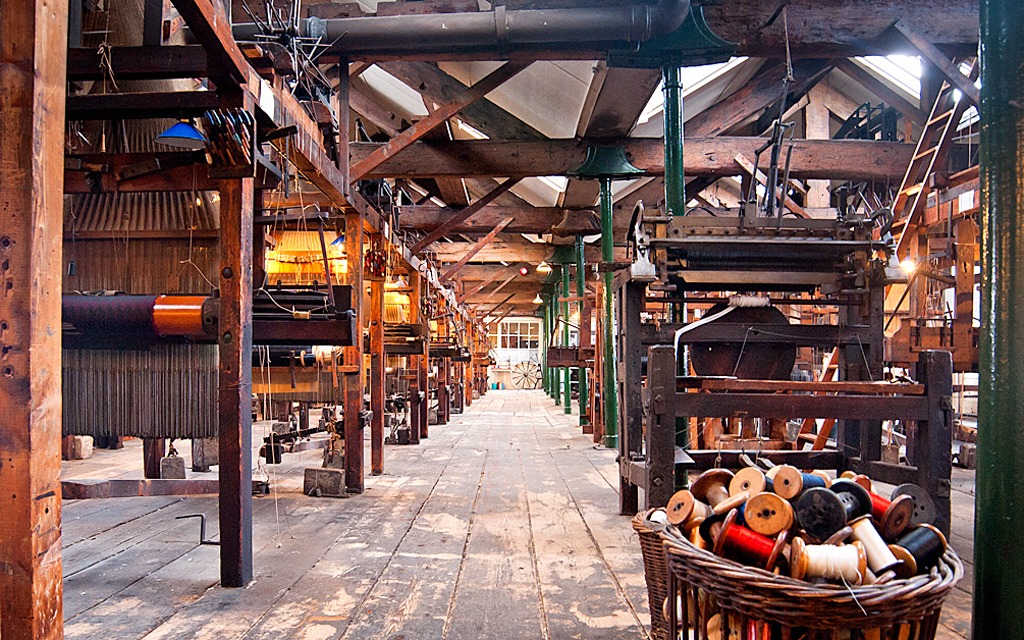
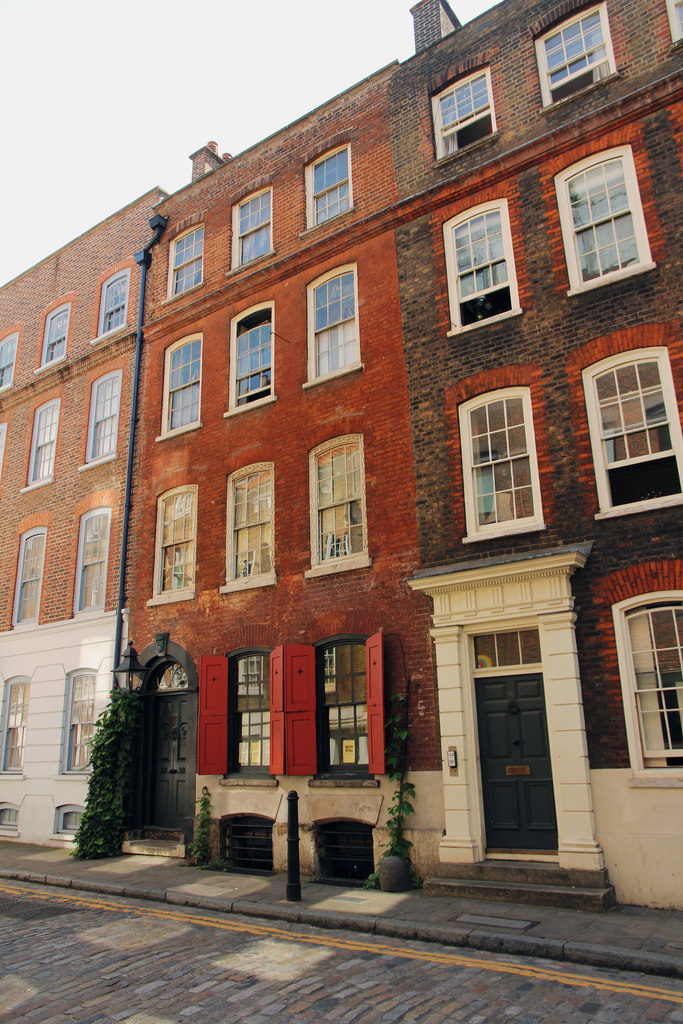
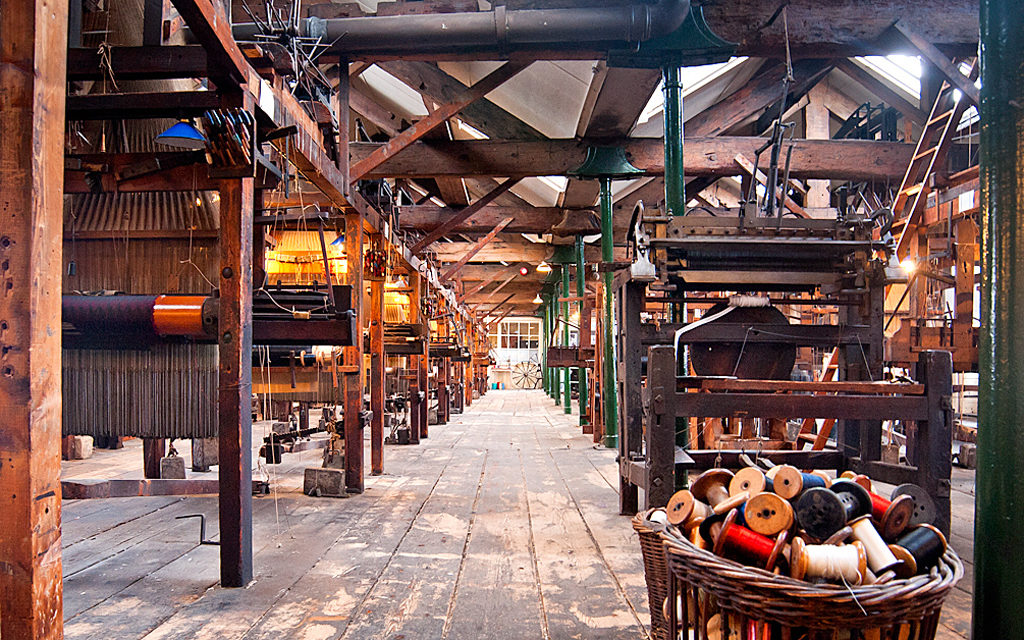
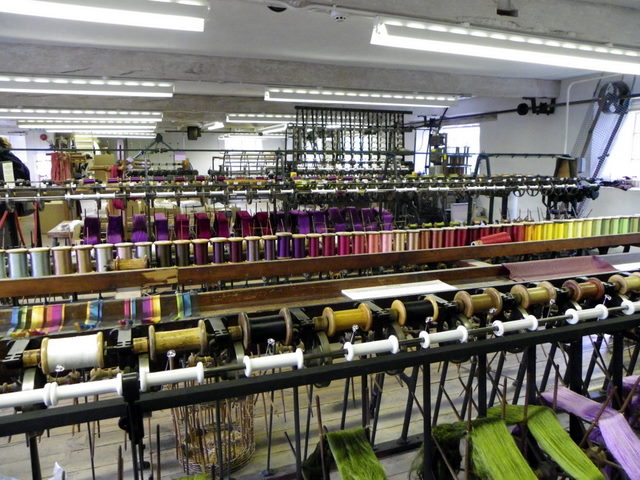
Interested to see that that was no mention of the Silk Mill and Museum in Braintree, Essex although in the section on Macclesfield, Paradise Mill is mentioned but this I thought was next door to the Mill in Braintree. Apolgies if I am wrong
Dear mrs Fisher just seen GTO magazine,294 and then went and found GTO 292 to reread the Silk mill article about Paradise Mill in Macclesfield. Briefly, my ancestor Matthew Mayers founded Stockport Sunday School in 1784 and after the Bi centenary in 1984, Iwas given the Pedigree of the Meres of Mere back to 1163 related to the gentry of the local halls up till 1825 when there was a missing link with the last few generations of my dads family through aletter naming all the begetting that went on, according to my 90 year old great aunt. In 1990 we took the family to stay in a weavers cottage in MacclesfieldB and B for week. Discovered a huge building that was the former Macclesfield ol Sunday School, a younger sister of Stockport sunday school. At this point a private group was to be taken round Paradise Mill by a mr Brocklebank of the Brocklebank society. Have lots to tell, as still in touch with related discoveries and would like to visit the Braintree one. A few years ago our WI visited the David Evans mill near the Dartford tunnel and saw Silk production. Think it later closed